Abstract
OBJECTIVE: To examine the characteristics of reported dog and cat bite incidents in El Paso, Texas, and their implications for local bite prevention programs. METHODS: The authors reviewed a random sample of reported dog bites and all reported cat bites in El Paso, Texas, in 1995 using existing animal control surveillance data. RESULTS: The majority of cat bites (89.4%) were provoked, with females (57.5%) and adults (68.3%) more likely to be victims than males or children. In contrast, just under half of dog bites (44.6%) were provoked, with males (65.6%) and children (63%) more likely to be victims than females or adults. Dogs that had not been vaccinated for rabies were involved in 65% of dog bites and cats that had not been vaccinated for rabies were involved in 92% of cat bites. CONCLUSION: Effective bite prevention programs should address the finding that both restrained and unrestrained dogs may bite even when unprovoked and that unrestrained cats usually bite when provoked.
Full text
PDF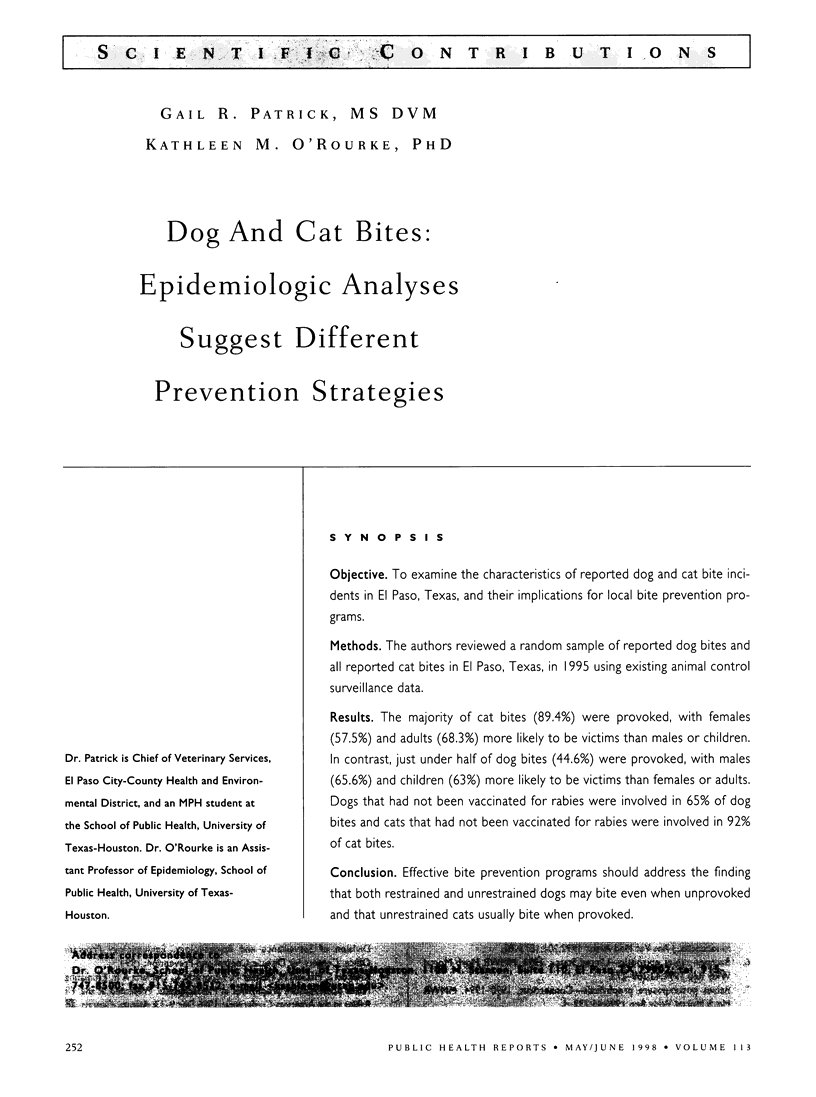
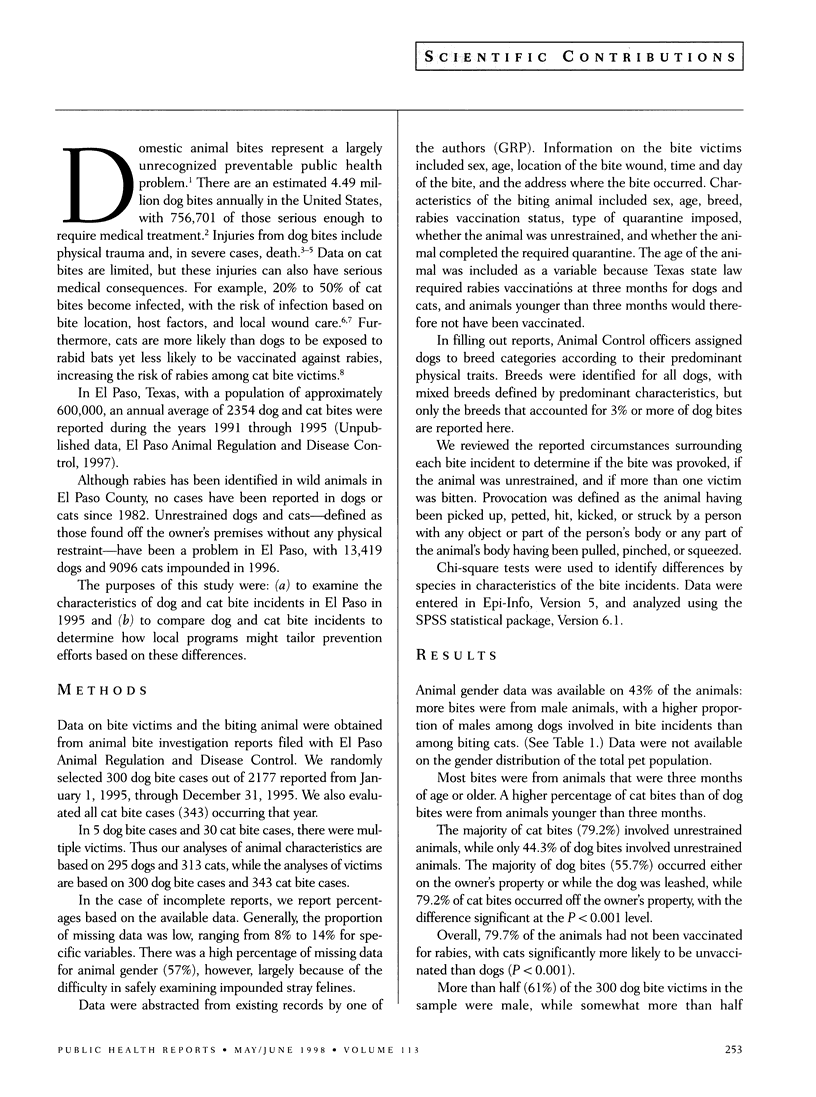
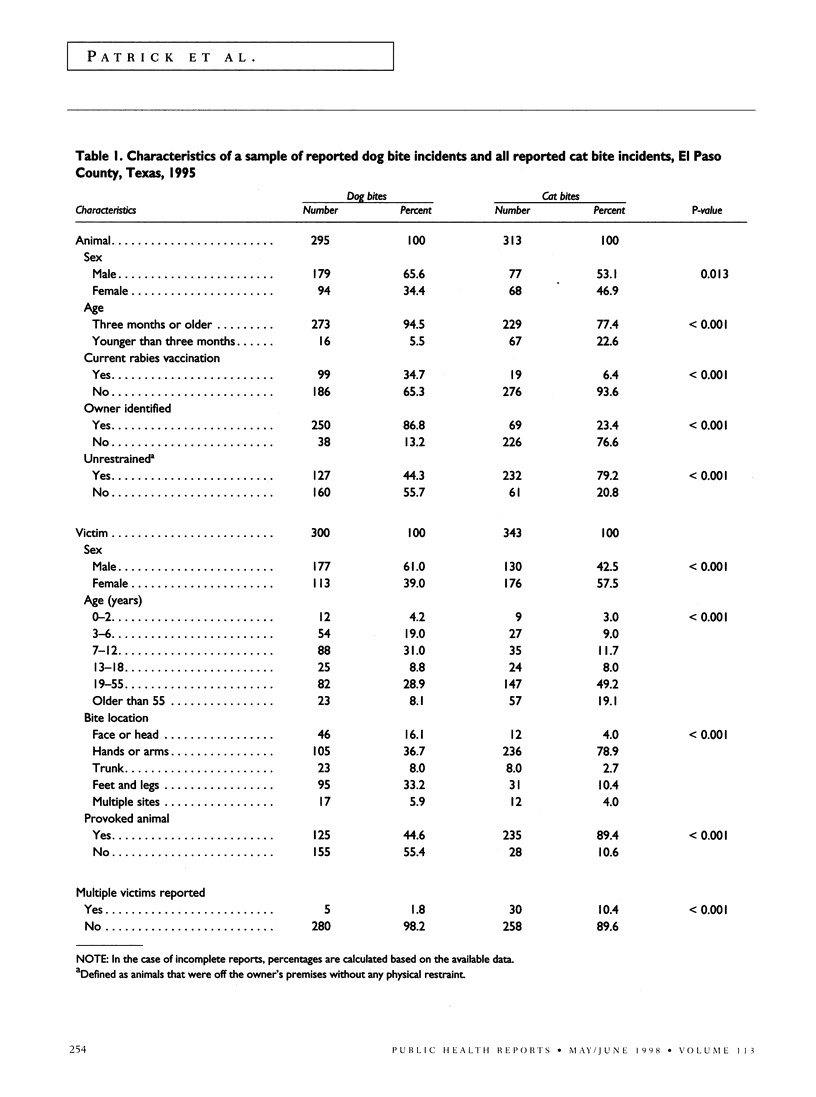
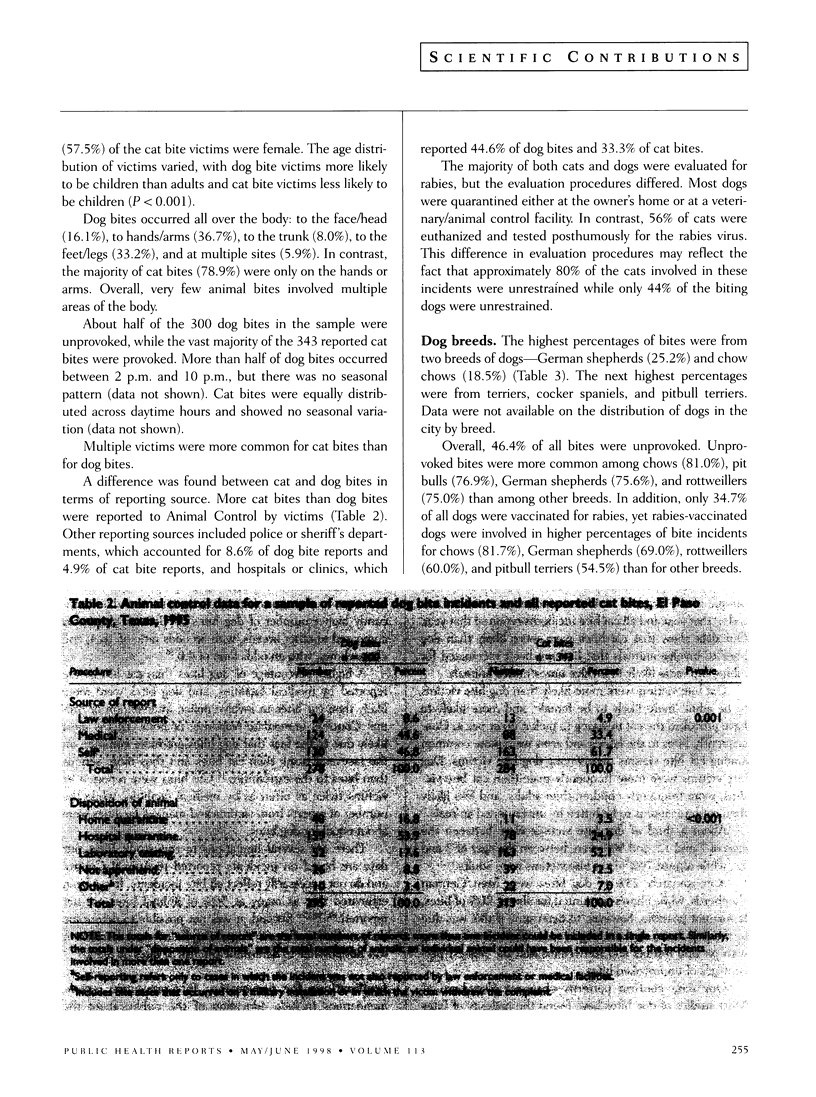

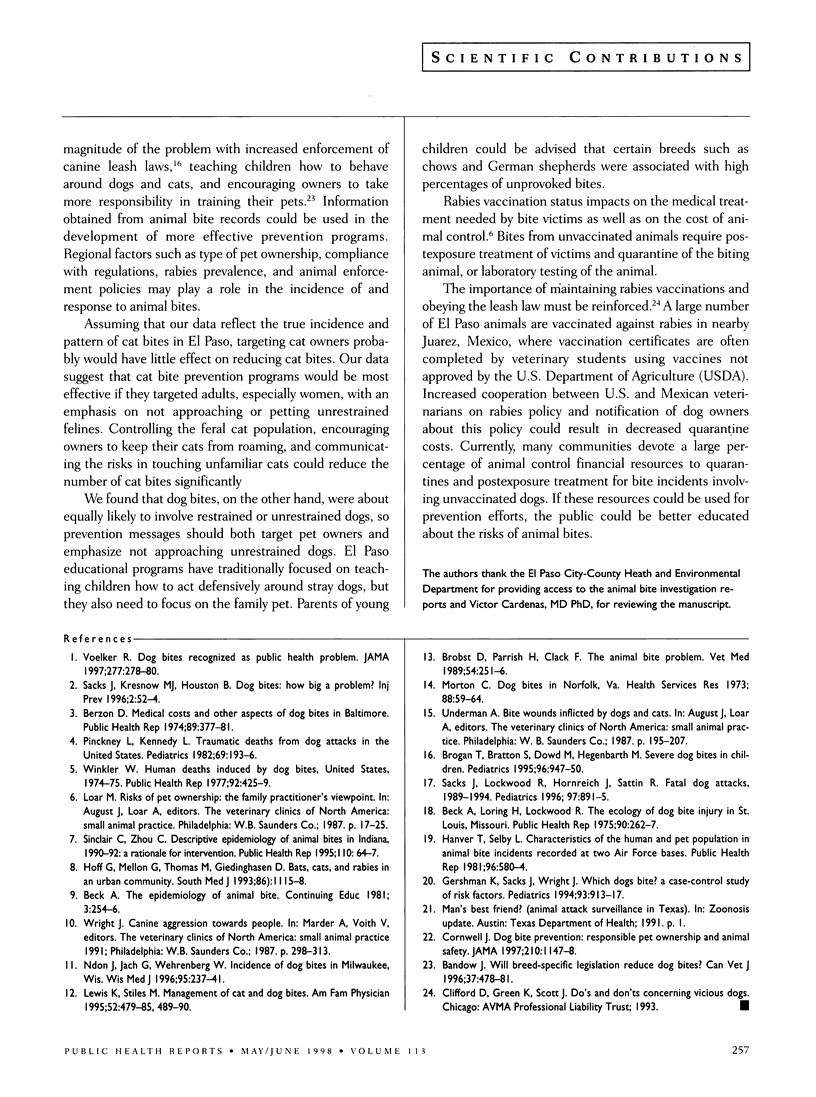
Selected References
These references are in PubMed. This may not be the complete list of references from this article.
- Bandow J. H. Will breed-specific legislation reduce dog bites? Can Vet J. 1996 Aug;37(8):478–481. [PMC free article] [PubMed] [Google Scholar]
- Beck A. M., Loring H., Lockwood R. The ecology of dog bite injury in St. Louis, Missouri. Public Health Rep. 1975 May-Jun;90(3):262–267. [PMC free article] [PubMed] [Google Scholar]
- Berzon D. R., DeHoff J. B. Medical costs and other aspects of dog bites in Baltimore. Public Health Rep. 1974 Jul-Aug;89(4):377–381. [PMC free article] [PubMed] [Google Scholar]
- Brogan T. V., Bratton S. L., Dowd M. D., Hegenbarth M. A. Severe dog bites in children. Pediatrics. 1995 Nov;96(5 Pt 1):947–950. [PubMed] [Google Scholar]
- Hanna T. L., Selby L. A. Characteristics of the human and pet populations in animal bite incidents recorded at two Air Force bases. Public Health Rep. 1981 Nov-Dec;96(6):580–584. [PMC free article] [PubMed] [Google Scholar]
- Hoff G. L., Mellon G. F., Thomas M. C., Giedinghagen D. H. Bats, cats, and rabies in an urban community. South Med J. 1993 Oct;86(10):1115–1118. doi: 10.1097/00007611-199310000-00007. [DOI] [PubMed] [Google Scholar]
- Ndon J. A., Jach G. J., Wehrenberg W. B. Incidence of dog bites in Milwaukee, wis. Wis Med J. 1996 Apr;95(4):237–241. [PubMed] [Google Scholar]
- Pinckney L. E., Kennedy L. A. Traumatic deaths from dog attacks in the United States. Pediatrics. 1982 Feb;69(2):193–196. [PubMed] [Google Scholar]
- Sacks J. J., Kresnow M., Houston B. Dog bites: how big a problem? Inj Prev. 1996 Mar;2(1):52–54. doi: 10.1136/ip.2.1.52. [DOI] [PMC free article] [PubMed] [Google Scholar]
- Sacks J. J., Lockwood R., Hornreich J., Sattin R. W. Fatal dog attacks, 1989-1994. Pediatrics. 1996 Jun;97(6 Pt 1):891–895. [PubMed] [Google Scholar]
- Sinclair C. L., Zhou C. Descriptive epidemiology of animal bites in Indiana, 1990-92--a rationale for intervention. Public Health Rep. 1995 Jan-Feb;110(1):64–67. [PMC free article] [PubMed] [Google Scholar]
- Underman A. E. Bite wounds inflicted by dogs and cats. Vet Clin North Am Small Anim Pract. 1987 Jan;17(1):195–207. doi: 10.1016/s0195-5616(87)50612-x. [DOI] [PubMed] [Google Scholar]
- Winkler W. G. Human deaths induced by dog bites, United States, 1974-75. Public Health Rep. 1977 Sep-Oct;92(5):425–429. [PMC free article] [PubMed] [Google Scholar]


